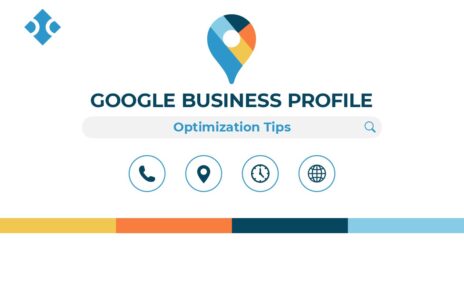What Exactly Is A Fake Influencer?
They often use bots or genuine individuals who buy likes and follows to artificially increase interaction, giving the impression that they have a large following and hence have a lot of market impact. However, the truth is that you’d have better luck chucking your cash out the window and onto the street.
Through the information of many influencer agency in India, It is also evidently seen in the circle of influencers in India to have fake followers.
How Can You Identify A Fake?
By looking at the accounts on their following list, it is easy to identify a false influencer. Be wary of accounts with no display picture, few followers, posts, secret accounts, and accounts with few to no followers. Another indicator is if followers’ handles include a lot of digits, especially if the names are made up. It is quite probable that these accounts are purchased bots if there are many of them. Likes and comments may be handled in the same way.
Detecting Fake Followers on Your Brand Influencer
Follow these warning signs:
- Followers without Photos or Posts: You can usually conclude that followers who haven’t posted or don’t have a profile photo are false if they follow an influencer. Brands should be looking for influencers with large private account followings and “spammy” handles.
- Irrelevant and/or Spam Comments: It’s simple to assume that an influencer’s followers are active if they get a large number of comments. View a few pictures and skim the comments. The comments are from fake followers if they are blatantly pointless or nonsense.
- Services that come after/follow “fan-buying” services: One or two fan-buying accounts may be visible if you check through their followers and the people they follow. These are significant warning signs that the Instagram influencer is acquiring fake followers.
Examine Follower Engagement
An account’s engagement rates should be proportionate to the number of followers it has. The number of followers may be compared to the amount of likes and comments to determine this for brands. There are probably a lot of false followers on Instagram or TikTok profiles with a lot of followers but very little activity. By dividing the number of likes and comments by the number of followers, you may determine an account’s engagement rates.
These figures may be used to measure the level of interaction among your followers. Divide the number of followers by the number of comments and likes on the user’s most recent ten photographs, then multiply the result by ten to obtain an average engagement rate. You should always examine the account’s followers and comments to be sure that the likes and remarks are genuine, even if the interaction seems genuine.
Use an Automated Program
Some tools are available to detect whether an influencer’s followers are fake if looking through TikTok or Instagram followers manually isn’t the appropriate match.
Influencer Fraud And Its Ramifications
Influencer fraud may have a negative impact on your business in a variety of ways. Your company’s bottom line is one of the most important things to consider. Fake influencers may drain your account while producing no real value.
For a well-known and well-known brand, this type of loss may not be absolutely devastating. Without any long-term consequences, they may be able to recoup their losses in a few months swiftly. However, this might severely blow the marketing and branding budgets of startups and small firms with little resources.
A company might have used that money to make a natural effect instead of wasting it on a stunt. In addition, a marketing team wastes time and resources coordinating with an influencer who turns out to be a scammer in order to construct an effective influencer marketing plan. Brands lose time and money working with unreliable influencers who don’t deliver on their promises.
Brand reputation and trust may be ruined by influencer fraud, which is why it is essential to keep an eye on your influencers and their activities. Fake influencers, on the other hand, are notoriously untrustworthy. People may question your trustworthiness if they realise you collaborated with a phoney account.
Impact of Fake Influencers Recruited with Fake Fans
By employing fake followers, producers voluntarily become false influencers. The success of creators is built on a solid reputation. A creator’s reputation cannot be established by relying on fake followers to develop a brand.
Brands might suffer as a result of dishonesty by content creators. It’s not uncommon for companies to be deceived by content providers that use false followers.
Because of this, many companies who sell false social media followers will have those followers “like” a brand’s page. From a consumer’s perspective, a brand loses credibility if they learn that any of its followers are fake. Honest artists may be deterred from working with a company if their social media profiles are filled with fake followers.
A partnership with fake influencers may result in a lack of return on investment and a tarnished image. To put this in perspective, a business might lose thousands of dollars every campaign by enlisting want-to-be artists with a false following.
Is it against the law to have fake followers?
Although having false followers is not illegal, it is against the community rules of the majority of the leading social media networks. Reduced platform functionality and account deletion are potential consequences of buying fake followers or participating in follow-for-follow scams.
Do fake followers use bots?
In addition to follow-for-follow or share-for-share schemes, where users agree to engage with random accounts in exchange for a favour, bots are another fake follower. These fake followers don’t care about a creator’s work.
Conclusion
Many Instagram users have discovered that using purchased accounts to inflate their followings is an effective way to become influencers and make money. This, on the other hand, severely damages their credibility and clout. An easy technique to determine whether or not comments and likes are coming from genuine or fake followers is manually checking for spam accounts and remarks. Spam accounts or fan-buying services may follow some real accounts, but marketers should pass on partnering with an influencer who has a large number of fake followers. Momspresso Mymoney is a kind of influencer agency in India that does not qualify fake influencer India accounts and make sure none of its customers faces spam, and the business has an impact.





